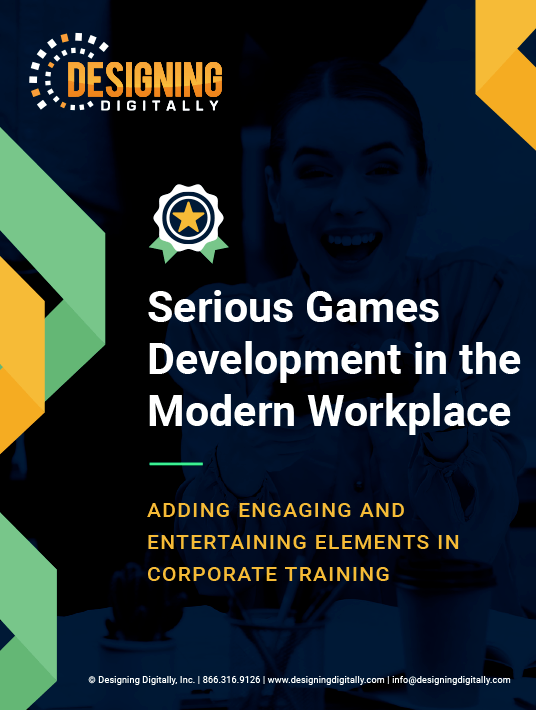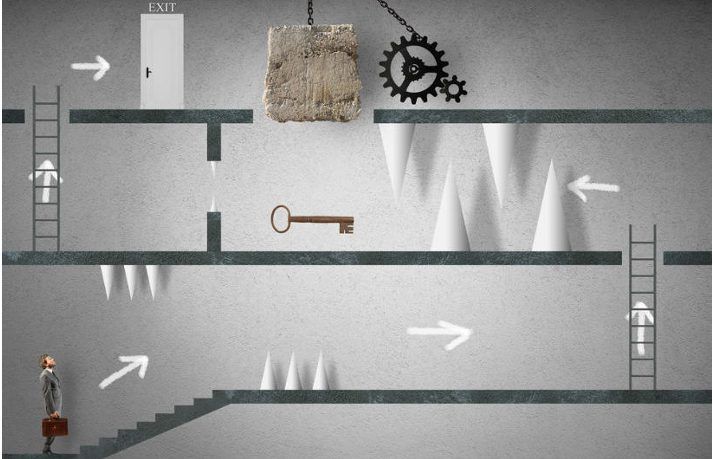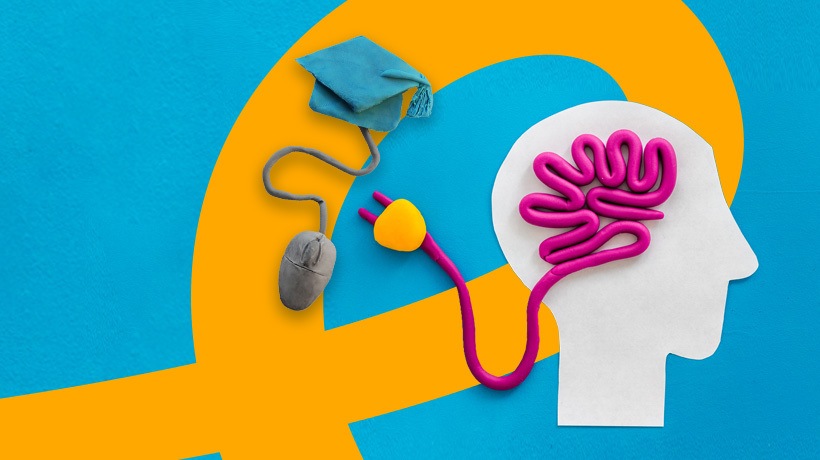Serious Game Mechanics You Should Consider Using In The Workplace
Designing a serious game is a serious business. And, it can help grow your business and increase your employees' job performance. Thus, serious games are being adopted with lightning speed by many companies around the world.
Training games, like all games, need certain mechanics to function properly and attain the required results. Game mechanics are those elements that determine the type of gameplay your game will have. They control how the player interacts and advances through the game as well as how they win it.

Serious game mechanics are actually borrowed from gamification. To begin the discussion on mechanics we first need to make clear why serious games are different from gamification.
Gamification And Serious Games: What's The Difference?
Both gamification and serious games fall under the game-based learning method. Both are designed to give players a deeper understanding of difficult concepts, help them problem solve real-world problems, and increase engagement in the training. Both gameplay styles need to be aligned with business and learner objectives. Still, there are defining differences between them.
Gamification happens when you include gaming elements into an established learning module. This means that the purpose of the game is ultimately to learn. A gamified learning module will include badges, leaderboards, and rewards to motivate player engagement and learning success. It adds an element of fun to relatively traditional eLearning modules.
Conversely, serious games shatter the mold of slide-by-slide presentations. A serious game is designed from the beginning with the balance of education and gameplay in mind. Companies want their employees to enjoy the experience since this helps learners incorporate new skills and knowledge faster and easier. This type of training game will put the learner at the center of their gaming experience. It can be highly customizable, include personalized learning paths, and adapt to the player's current skills and knowledge levels. It's important to survey your staff to find out what gaming platform preferences they have, what learning objectives they might aspire to, and what type of gaming mechanics they prefer.
For example, the majority of your staff might find it helpful to win badges for their in-game achievements. Others might prefer leaderboards so they can instigate a bit of friendly competition between co-workers. You can't include all mechanics, of course, but learning about your employees' preferences can help you choose a few that will make the biggest difference.
9 Serious Games Mechanics To Use
Now, let's get down to the practical bit! Here are 9 serious games mechanics (borrowed from gamification, and games in general), that you can use to design an amazing and powerful training game for employees.
1. Badges
Everyone knows about merit badges. They were essentially created by The Boy Scouts of America in 1907 as rewards for achievements. Today, many organizations and game developers use badges for this purpose. Social media games use them and so do educational games. Depending on the level of difficulty in earning it, a badge can symbolize:
- Level of in-game achievement
- Merit for completing a certain task
- Status, when compared to other players
- Feedback for performance
- Belonging to a certain group of high-achievers
Badges are usually collected as a player goes up through the levels of the game. In serious games, employees will earn badges when they acquire the desired skills, understand a concept, or finish a game level.
2. Branching
Branching scenarios are a game mechanic that allows the player to determine how the game will continue based on their choice. They will have a few options to choose from, and each option will give them different results and lead the game down a particular path. The idea behind branching is to teach learners that there can be more than one right answer to a particular problem. For example, in customer service, an employee might offer different solutions based on the client's needs or complaints. If the customer complains about the product they just bought, the agent can offer to return their money, offer them a replacement product, give them store credit, or extend the product warranty. Thus, branching will enable employees to go through realistic scenarios and allow them to discover the best solution for various customer service interactions.
3. Information Cascade
Learning games often require the player to demonstrate a certain skill or level of knowledge before moving on to the next game level. This is where cascading information comes in. This game mechanic implies that tough or broad concepts need to be broken down into micromodules. Depending on its complexity, a concept can span across a few levels or deliver key information during a single level.
4. Leaderboards
Ranking players by comparing their success relative to specific criteria means you're using leaderboards. Including a leaderboard, game mechanics depends on the level of competitiveness you want your employees to rise to. If the difference in scoring between players is too high, leaderboards might become demotivating to employees at the bottom of the ranking list. Still, if you use only a few qualifying criteria, the competitive drive can increase, since the rankings are not too far apart.
5. Rewards
You can use in-game rewards or material rewards to increase learner engagement and motivation. In-game rewards can be points that employees need to gather with the goal of unlocking the next level, getting badges, or climbing up the leaderboards. The type of material rewards you offer employees can depend on your resources and budget. You can give high-achievers a day off, a free spa treatment, a family pass to the movies, or any other small incentives for performing well in the game.
6. Recognition
Praise is an essential part of boosting employee confidence and promoting increased productivity. Giving public recognition to learners who go above and beyond the game objectives is a nice way to show you care. Employees will feel more satisfied in their job when they see management is acknowledging their achievements.
7. Role-Playing
This is not strictly a game mechanic per-se, but it is a proven fact that making players the main character of their game experience increases engagement, interest, and completion motivation. Role-playing connects the player to the game on an emotional level. This, in turn, generates a ripple effect of benefits because the player cares about what happens to their character, aside from trying to earn points and badges for their achievements.
8. Time-Constraints
Including the countdown, mechanics can increase adrenaline and desire to reach the game level objective as fast as possible. Giving the learner a limited amount of time to complete a task or finish a level lends itself well to cultivating employee competition. It opens the door to discussions based on the game content, gameplay, and player rankings.
9. Trivia
Who doesn't like trivia? Granted, trivia is called trivia because it generally contains information of little value. Still, you can use this game mechanic for the benefit of the learners by using trivia in relation to the content material to be learned. You can include trivia questions about key concepts throughout the game to help employees check their knowledge retention levels. You can even organize a post-game trivia event. You'll bring in the fun factor into the real workspace and help employees learn from each other and deepen their understanding.
The Modern Workplace Thrives On Games
When creating a serious game you'll need to think about what game mechanics to include. Choosing 3 or 4 should help the development process run smoothly. So, don't overdo it! Keep in mind that the mechanics you use should align with the business goals, employee preferences, and desired learning outcomes. Read the eBook Serious Games Development In The Modern Workplace and learn more about the benefits that are gained with game-based learning.






